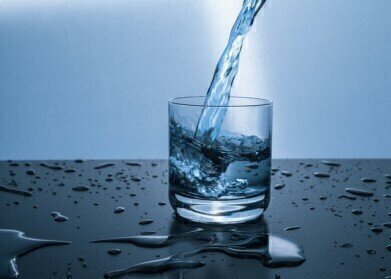Water/Wastewater
How Do Sulphates Get into Water?
Mar 12 2019
With seemingly poisonous, harmful and irritating effects on the human body, it is surprising that we are continuing to find sulphates in many of our daily use products. Shampoo, conditioner, face washes, toothpaste and even the water we drink all contains this potentially damaging compound. But just how does sulphate harm the body? How do sulphates get into water in the first place? And how do we determine the level of sulphate in water? Read on to learn more.
What is sulphate?
Sulphate – or SO4 – is commonly found in almost all natural water sources. The polyatomic anion is widely used in a number of industries, including pharmaceutical, cleaning supplies and beauty products. They are the salts of sulphuric acid, commonly used in lead-acid batteries, cleaning agents and fertiliser.
While in some cases is can occur naturally – with some soils and rocks containing sulphate minerals – sulphate is predominantly a contaminant that makes its way into our water supply through waste and industrial discharge. Mines, smelters, paper mills, textile mills and tanneries all produce an abundance of sulphate, which is left in industrial waste and gets into streams and groundwater. The main sulphates that are found in out water are sodium, potassium and magnesium sulphates, as they are all highly soluble.
As well as being present in our water supply, sulphates can also be found in the atmosphere. Formed by the combustion of fossil fuels, atmospheric sulphur trioxide combines with water vapour in the air to form dilute sulphuric acid, commonly known as acid rain.
Health impacts
Although sulphates in small amounts should not significantly affect the drinker or user, those who aren’t used to the compound may suffer from dehydration and diarrhoea. Children or those with pre-existing intestinal issues are often more sensitive to sulphates, increasing the importance of monitoring levels. For instance, baby food should not be prepared using water with a sulphate level of 400 mg/l or more.
As well as children, animals are also highly sensitive to sulphate in drinking water. for young animals especially, high sulphate levels can cause severe, potentially even fatal, diarrhoea and sickness.
Removing sulphates from water
While its unlikely sulphates in your water could be fatal for humans, the affects of high levels can be unpleasant and damaging to your intestines. So, its important to be aware of sulphate levels in your water and understand how to remove it. There are three key methods used to remove sulphates from water:
- Reverse osmosis – a water treatment system that removes almost all dissolved elements and chemicals in water
- Distillation – water is boiled, and the steam cooled until it condenses into a separate container, leaving all dissolved substances behind
- Ion exchange – a larger scale water treatment, involving chemically removing dissolved substances from water.
Digital Edition
IET 34.2 March 2024
April 2024
Gas Detection - Biogas batch fermentation system for laboratory use with automatic gas analysis in real time Water/Wastewater - Upcycling sensors for sustainable nature management - Prist...
View all digital editions
Events
Apr 22 2024 Hannover, Germany
Apr 22 2024 Marrakech, Morroco
Apr 23 2024 Kuala Lumpur, Malaysia
Apr 23 2024 Kintex, South Korea
Apr 23 2024 Edmonton, AB, Canada


















